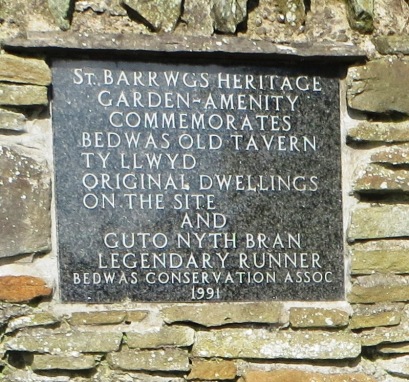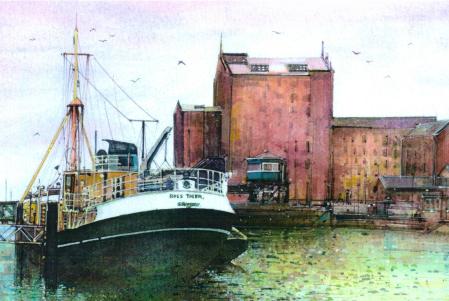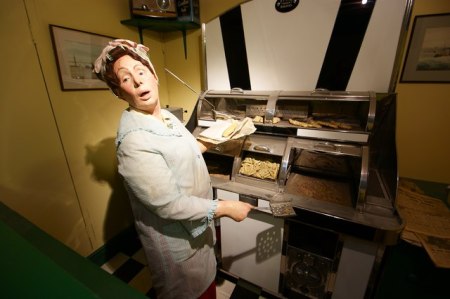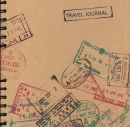Disappointed with Cascais we looked for something else to do, somewhere else to visit. After consulting the guidebook we agreed on nearby Cabo da Roca.
Cabo da Roca is the most westerly point of mainland Europe. The Dingle Peninsula in Ireland is marginally further west and Iceland is way further west but they are not part of continental Europe. It doesn’t really matter because if you include the Portuguese Azores then Portugal is undisputed furthest west. I do like to be clear about these matters.
It was a pleasant drive but the road was surprisingly busy and when we arrived we understood why. There was a massive car park and a line of tourist coaches out of Lisbon. I immediately told myself that this was going to be something really good.
I was spectacularly wrong.
There is nothing there except the Atlantic Ocean, a lighthouse station and an average overpriced gift shop and café. It is a mystery to me how places like this can become a tourist attraction, I imagined that I would be standing here alone with the Atlantic wind tugging at my shirt and rearranging my hair in some sort of personal spiritual moment but no, there were literally hundreds of people.
As a visitor attraction it ranked up there with the Dark Hedges in Northern Ireland but at least that had been a filming location for ‘Game of Thrones’.
It must surely rate as one of the most pointless places to visit ever. I am not trying to put you off visiting but honestly, only go if you are really desperate for something to do.
I was intrigued by a monument stone which announced the geographical facts but was so badly designed that it might just be the worst ever.
But then I remembered this one in Caerphilly in South Wales which easily takes the gold medal …
I have been to the most northern capital city in Europe and that was well worth a visit – Reykjavik in Iceland and to the most easterly point in the UK at Ness Point in Lowestoft which wasn’t. There is no visitor centre, no souvenir shop and it is difficult to find located as it is on the edge of an industrial estate and close to a sewage treatment works and a massive wind turbine called Goliath (it was once the biggest in England). There is only a circular direction marker known as Euroscope, marking locations in other countries and how far away they are.
Which brings me conveniently to the Four Corners monument where four US States meet at one intersection and it is possible to be in all of them at the same time by standing in two and reaching down and touching the others. To get there we drove across a featureless landscape where distant mountains stood like islands in an ocean of desert and through a landscape scoured by erosion, a skeletal land stripped of all but the most minimal vegetation.
Utah and Colorado we had already visited and we would be spending the rest of the day in Arizona but we were able to make a very brief visit to New Mexico as well and although we only went a few yards across the border it still counts as another State visited.
When I was young I was always always intrigued by the clinical layout of the USA into a chessboard pattern of States that contrasted so noticeably with the irregular boundaries of the English Counties.
I know now that the man responsible for this was Thomas Jefferson who before the became the third President of the USA came up with the idea of strict regulation that subsequently imposed this orderliness upon the western territories. Quite simply the State and County boundaries completely disregard sensible topographical features like rivers and mountains that make natural geographical boundaries, in favour of the straight-line solution. Although it seems odd this seems to suit America because even the boundary of a place like the Yellowstone National Park is a convenient rectangle with straight-line borders and I would have thought that would be almost impossible to sensibly achieve.
Once you have seen the monument, climbed the viewing platform, walked through all four States and had your photograph taken there isn’t a great deal left to do at Four Corners and it wasn’t long before we were back on the coach and heading deep into Arizona towards Monument Valley, a journey that took us through the extensive Navajo reservation in the north east of the State.
There really wasn’t a lot left to do at Cabo da Roca so we left and returned to Cascais. Despite the geographical experience I am happy to nominate Cabo da Roca as the most pointless place to visit ever, even above Vaduz in Liechtenstein and Swan Lake in Moscow, the Troodos Mountains in Cyprus, even above Four Corners in USA, Ness Point in East Anglia (UK) and Land’s End in Cornwall.
Someone with a perverse sense of humour or alternatively a very long stretch of imagination designed this postcard…
I have dealt with the subject of pointless places to visit in a couple of previous posts…



















































